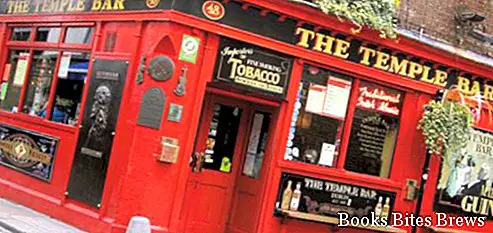What to see in Dublin, one-day itinerary including the main monuments and places of interest, including Castle and Cathedral of Christ.
Tourist information
Located on the east coast of the island, where the Liffey River flows into the Irish Sea, Dublin was founded by the Vikings who made it a center for the slave trade.
The City includes the area administered by the Dublin City Council together with the suburbs, once part of County Dublin, divided between the counties of Dun Laoghaire-Rathdown, Fingal and South Dublin.
Dublin is a very popular destination for those who go to Ireland, famous for the many meeting places, for the musical passion and for the friendliness of its people.
Dublin is also the cultural center of the country, great writers such as William Butler Yeats, George Bernard Shaw, Oscar Wilde, Samuel Beckett, James Joyce, protagonists of twentieth-century literature, and famous musicians such as contemporaries U2, mythical group rock.
The city was founded by the Vikings in the third century AD, was converted to Christianity by Saint Patrick, the patron saint of Ireland and starting from the twelfth century underwent British domination, like the rest of Ireland.
In the 17th century the inhabitants had to renounce their Catholic faith and submit to the Protestant one in all aspects of civilian life. In the 19th century it was plagued by a terrible famine.
Independence from the British was sanctioned in 1921 with the birth of the free state of Ireland, following numerous popular uprisings.
What see
Temple Bar, the artistic and tourist heart of Dublin, is a neighborhood where there are many pubs, restaurants, art galleries and interesting exhibition centers.
St. Patrick's Cathedral, founded in 1191 and remodeled in the nineteenth century while maintaining the original Gothic layout, is the largest church in Ireland, located in the same place where, according to tradition, St. Patrick baptized the first local Christians.
Phoenix Park is one of the largest fenced parks in Europe, located about 3 km northwest of central Dublin, full of lawns and tree-lined avenues, as well as many species of animals.
Recommended readings- Highlands (Scotland): what to see in the region
- Liverpool (England): what to see
- Ireland: useful information
- Glasgow (Scotland): what to see
- Great Britain (United Kingdom): useful information
The Cathedral of Christ was built in 1037, within the primitive medieval walls of the city.
Trinity College, located in the center of the city, is a very ancient and prestigious educational institution, founded in 1592 by Elizabeth I.
It represents the most prestigious Irish university, previously reserved exclusively for Protestant students.
The historic university complex, the park and the precious library are open to the public.
The Castle, located on the southern bank of the Liffey River, was built by King John of England in 1204 and became the seat of English power in Ireland.
Destroyed by fire in 1684, the current structure dates back largely to the 1700s.
Little remains of the original medieval structure, partially open to the public, it houses the Chester Beatty Library.
Custom House, which is an excellent example of Georgian construction, houses the Irish Ministry for the Environment, Heritage and local government.
Leinster House, is the seat of Parliament.
Merrion Squar is one of the most beautiful squares in the city, overlooked by the National Museum of Ireland and the National Gallery of Ireland.
St. Jame’s Gate Brewery is the historic home of the famous Guinness beer factory.
Dublin's museums include the Hugh Lane Municipal Gallery, where important collections of modern art are exhibited, the National Gallery of Ireland, which houses works of the main European painting schools, and the National Museum of Ireland, where they are important sections concerning prehistoric, early Christian and early Christian Irish art.




